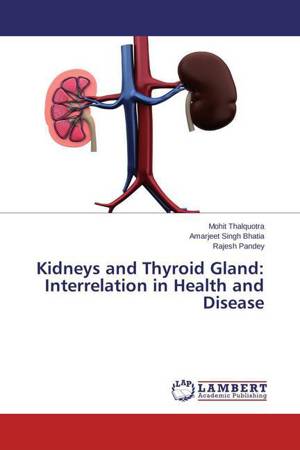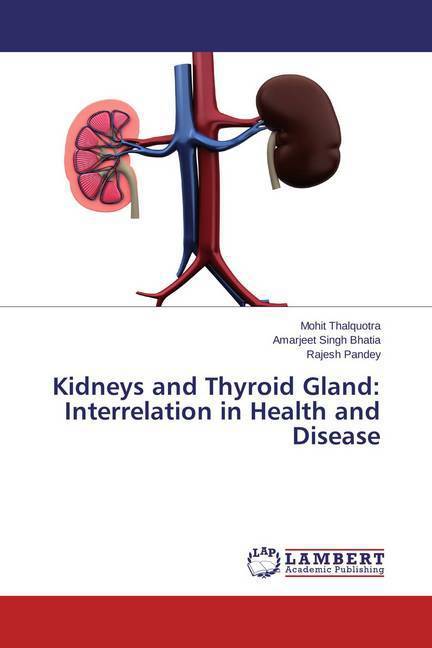
- Afhalen na 1 uur in een winkel met voorraad
- Gratis thuislevering in België vanaf € 30
- Ruim aanbod met 7 miljoen producten
- Afhalen na 1 uur in een winkel met voorraad
- Gratis thuislevering in België vanaf € 30
- Ruim aanbod met 7 miljoen producten
Kidneys and Thyroid Gland: Interrelation in Health and Disease
Interrelation in Health and Disease
Mohit Thalquotra, Amarjeet Singh Bhatia, Rajesh Pandey
Paperback | Engels
€ 53,95
+ 107 punten
Omschrijving
Chronic kidney disease (CKD) is a major risk factor for end-stage renal disease, cardiovascular disease, and premature death. Abnormalities in the structure and function of the thyroid gland and in the metabolism and plasma concentration of thyroid hormones are common in patients with CKD.The age-standardized global prevalence of CKD stages 1-5 in adults aged 20 and older was 10.4% in men (95% confidence interval 9.3-11.9%) and 11.8% in women (11.2-12.6%). This consisted of 8.6% in men (7.3-9.8%) and 9.6% in women (7.7-11.1%) in high-income countries, and 10.6% in men (9.4-13.1%) The total number of adults with CKD was 225.7 million (205.7-257.4 million) men and 271.8 million (258.0-293.7 million) women. This consisted of 48.3 million (42.3-53.3 million) men and 61.7 million (50.4-69.9 million) women in high-income countries, and 177.4 million (159.2-215.9 million) men and 210.1 million (200.8-231.7 million) women. Thus, CKD is an important global-health challenge, especially in low- and middle-income countries. National and international efforts for prevention, detection, and treatment of CKD are needed to reduce its morbidity and mortality worldwide.
Specificaties
Betrokkenen
- Auteur(s):
- Uitgeverij:
Inhoud
- Aantal bladzijden:
- 104
- Taal:
- Engels
Eigenschappen
- Productcode (EAN):
- 9783659819247
- Verschijningsdatum:
- 22/12/2015
- Uitvoering:
- Paperback
- Afmetingen:
- 150 mm x 220 mm
- Gewicht:
- 163 g

Alleen bij Standaard Boekhandel
+ 107 punten op je klantenkaart van Standaard Boekhandel
Beoordelingen
We publiceren alleen reviews die voldoen aan de voorwaarden voor reviews. Bekijk onze voorwaarden voor reviews.










